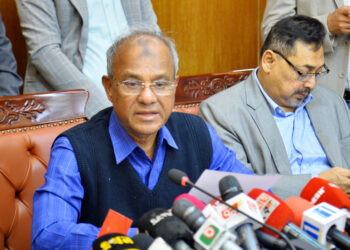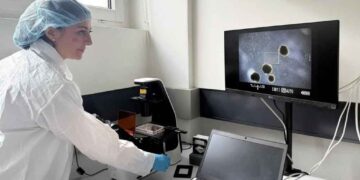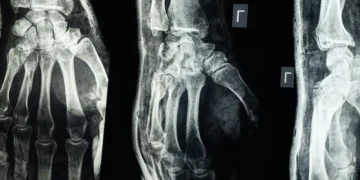Where Healing Meets Innovation: How Technology is Transforming Modern Medicine
When you think of a hospital room, what comes to mind? A quiet beeping sound, perhaps the sterile scent of antiseptic, and a patient lying in bed surrounded by machines. But behind the blinking monitors and digital records lies a powerful story one where science, human resilience, and technological brilliance are coming together to redefine healthcare as we know it.
In this rapidly advancing world of medical technology is easy to see the cold, clinical side of progress the machines, the algorithms, the numbers. But what’s often overlooked is the human heart at the center of it all. Behind every piece of technology is a story, a person, a life at stake.
Today, we’re living in a time when a smartwatch can detect abnormal heart rhythms before a person even realizes they’re in danger. A surgeon in one country can guide a robotic arm to perform surgery in another. All while sitting in a comfortable chair thousands of miles away. And patients, once confined to hospital beds, are now managing chronic illnesses from the comfort of their own homes, thanks to remote monitoring systems that provide real-time data to their healthcare teams.
This article is about the intersection of human empathy and cutting-edge innovation, where the cold steel of medical machinery meets the warmth of human hands, and where technology doesn’t just treat patients it helps heal them.
The Pulse of Innovation: The Rise of Medical Technology
Not long ago, diagnosing diseases and treating ailments meant physical exams, stethoscopes, and a lot of waiting. But today, medical technology has drastically altered this landscape, turning science fiction into reality.
AI-driven diagnostics are more accurate than ever, helping doctors and clinicians make quicker, better-informed decisions. Robotic surgery systems like the Da Vinci Surgical System have enabled surgeons to perform complex procedures with minimal invasion, allowing patients to recover faster and with less pain.
Some of the most groundbreaking innovations in medical technology are:
-
Da Vinci Surgical System: Revolutionizing surgery with robotic assistance, this system has been used in over 6 million operations worldwide, offering minimally invasive procedures that drastically reduce recovery time.(Source: Intuitive Surgical Official Website)
-
Butterfly iQ+: A portable, smartphone connected ultrasound device, providing diagnostic tools in areas with limited access to traditional medical equipment, like rural or remote regions. (Source: Butterfly Network Official Website)
-
Tempus: An AI-powered platform that helps oncologists tailor cancer treatments by analyzing vast amounts of clinical data. (Source: Tempus Official Website)
-
Apple Watch Series 9: A consumer product now saving lives with its ability to detect abnormal heart rhythms, alerting users to potential issues they might not even know about.(Source: Apple – Health Features)
These innovations are undeniably game-changers in healthcare, delivering life-saving benefits with remarkable accuracy. But even as machines and algorithms take center stage in diagnosing and treating disease, it’s crucial that we remember that medicine is not just about the science it’s about the people.
The Heart Behind the Hardware
Imagine a father watching his newborn daughter struggle to breathe in a neonatal ICU. Machines surround her. Monitors beeping. Tubes snaking gently into her tiny body. It’s terrifying. But it’s also miraculous. Because thanks to modern medical technology, that child has a fighting chance. The ventilator doesn’t just push air into her lungs. It pushes hope into a room that could have felt unbearably dark. Technology like this doesn’t just save lives. It restores futures. Mends broken families.
And reminds us that innovation, when rooted in compassion, is one of the most human things we can pursue.
Helpful and Trusted External Resources on Medical Technology
-
World Health Organization (WHO) – Medical Devices
-
National Institutes of Health (NIH) – Advances in Biomedical Technology
-
HealthTech Magazine – Innovations in Healthcare Technology
-
World Economic Forum – The Future of Health and Medical Technology
-
MedTech Europe – The Voice of the Medical Technology Industry
Read More: Empowering farmers with ‘Fosholer Chikitsha’: How Technology is Changing Bangladesh’s Economy
The Business of Healing: Medical Technology Billion-Pound Market
The world of medical technology is not just changing healthcare and it is driving an explosive global market. Valued at over £450 billion in 2024, the health tech industry is projected to grow at a rapid pace, reaching £600 billion by 2030. With increasing investments pouring in, new players are entering the market at a rapid pace.
Companies like Medtronic, Philips Healthcare, and Teladoc Health are leading the way, creating innovative solutions that impact millions of lives globally. For instance, Medtronic, which is the world’s largest med tech company, provides everything from insulin pumps to robotic surgery systems. These products, while offering life-saving solutions, are also creating immense commercial opportunities.
Investors have noticed. In 2023, global venture capital investments in med-tech reached record highs.The global medical devices market size was valued at over USD 550 billion in 2024 and is expected to grow to USD 850 billion by 2030. With major sums directed towards AI diagnostics, digital health platforms, and remote patient monitoring solutions. Even startups in emerging markets like Bangladesh, India, and Africa are finding ways to make healthcare affordable, even as they build businesses worth millions. (Source: Statista or Fortune Business Insights)
Global Healthcare: Innovation Meets Inequality
As we celebrate the achievements in medical technology, we must also address its inequities. While hospitals in countries like the UK, US, and Germany boast state of the art tools, many regions around the world still struggle with the basics of healthcare access.
In parts of Africa, for example, robotic surgery is still a distant dream. Instead, tele-medicine and mobile health technologies are bridging the gap. In Bangladesh, Jeeon, a healthcare startup, is using mobile health kiosks to provide remote consultations, diagnoses, and prescriptions, connecting rural populations to specialists thousands of miles away. m Pharma, a company working in Sub-Saharan Africa, is modernizing the pharmaceutical supply chain, ensuring essential medications are delivered on time, even to the most remote regions.
However, while these developments are promising, the fact remains that medical innovation must be accessible to everyone, not just the wealthy few. The greatest challenge facing the future of health tech is ensuring that advancements benefit all people not just those with the means to afford them. The Human Factor is that Why Machines Will Never Replace Doctors
While the world of medical technology continues to advance, there is an undeniable truth: healing is a deeply human act. AI, robots, and digital platforms are incredible tools, but they can never replace the human touch. Algorithms might diagnose a disease, but they cannot offer comfort in moments of uncertainty. Machines may execute a flawless surgery, but they cannot calm a patient’s nerves with a warm voice or a reassuring hand.
A survey conducted in the UK found that 70% of patients still prefer seeing a doctor in person, even if the same diagnosis could be made via AI. It’s clear that patients trust human doctors for more than just their technical skills they trust their empathy, their care and their personal connection.
Ultimately, the most powerful element of healthcare is the relationship between doctor and patient. No amount of technology can replace this. As healthcare providers become increasingly reliant on technology, they must also ensure that the emotional and psychological needs of their patients remain a top priority.
Ethical Considerations: The Dark Side of Medical Technology
Like any industry, medical technology has its challenges. Despite its many successes, there are serious ethical concerns that cannot be ignored.
-
Algorithmic bias remains a significant issue, as AI systems are often trained on predominantly white, Western data sets, resulting in disparities in performance when used on diverse populations. This can lead to misdiagnoses or delayed treatments, particularly for people of color, women, and other undeserved communities.
-
Data privacy is another major concern. Medical devices and wearable collect sensitive personal information, yet data breaches in healthcare are increasingly common. In 2024 alone, more than 1.2 billion patient records were exposed to cyber attacks.
-
Burnout among healthcare professionals is another issue exacerbated by technology. While tech can streamline administrative tasks, doctors and nurses are increasingly frustrated by the overwhelming number of patient records, digital consultations, and health data they have to manage.
As we continue to innovate, we must ensure that these tools serve the patients and the people, not just the machines themselves. The key to a thriving healthcare system is not just creating more technology but ensuring it’s fair, secure, and humane.
Herbal vs. Allopathic Medicine: Two Paths to Healing
In the diverse landscape of healthcare, herbal medicine and allopathic medicine stand as two prominent pillars of treatment, each with its unique approach, history, and role in the medical field. Both systems aim to heal, but they do so in different ways, catering to the varied needs of patients, from the young child with a fever to the elderly individual suffering from chronic ailments.
Herbal Medicine: Natural Touch
Herbal medicine, often referred to as traditional medicine, is deeply rooted in the natural world. For centuries, plants, roots, leaves, and seeds have been used to heal, soothe, and restore balance to the body. In Bangladesh, this practice is intertwined with the country’s cultural heritage.
Where people turn to local herbs to treat everything from fever to digestive disorders. Popular remedies include turmeric, neem, ginger, and holy basil. These plants have been revered not just for their healing properties but also for their ability to connect people to the earth and nature. The business of herbal medicine in Bangladesh is thriving. Local herbal products are widely sold in markets and pharmacies, and traditional healers continue to play an essential role in community health.
According to reports, the global herbal medicine market was valued at around USD 60 billion in 2024 and is projected to grow substantially. In Bangladesh, the demand for herbal products continues to rise, creating job opportunities, boosting local economies, and promoting a sustainable industry that often involves small-scale farming and local production.
However, it’s important to acknowledge that while herbal medicine has been successful for generations, it is not always without its challenges. The unregulated market, lack of standardized quality control, and limited scientific validation in some cases have led to concerns over the safety and effectiveness of some herbal treatments.
Allopathic Medicine: Modern Science and Precision
In contrast, allopathic medicine, often referred to as conventional or Western medicine, is based on scientific principles and focuses on the diagnosis and treatment of diseases using pharmacological drugs, surgery, and medical technology. This form of medicine is widely practiced around the world, including in Bangladesh, and has been at the forefront of managing diseases such as malaria, tuberculosis, and cardiovascular conditions.
Hospitals, clinics, and medical centers in Bangladesh are increasingly equipped with modern diagnostic tools and advanced treatment options like surgical procedures, antibiotics, and vaccines. The country has made significant strides in healthcare over the years, with medical institutions improving the quality of care and expanding access to allopathic treatments.
The economy of allopathic medicine in Bangladesh is substantial. The healthcare sector is a critical component of the nation’s economy, employing a large number of doctors, nurses, technicians, and healthcare administrators. The growing demand for modern medical services has led to a rise in private hospitals, pharmaceutical companies, and medical tourism. In fact,
Bangladesh has become a hub for affordable healthcare in the region, attracting patients from India, Nepal, and Myanmar who seek high-quality treatment at lower costs than in neighboring countries. While allopathic medicine has brought immense benefits, it too has its challenges. The high costs associated with specialized treatments, medications, and hospital stays can be prohibitive for many, especially in rural areas where access to care is limited.
Business and Economy of Bangladesh: A Country on the Rise
As one of the fastest-growing economies in Asia, Bangladesh has made remarkable progress in the healthcare sector, blending the old with the new. The country’s healthcare industry is expanding rapidly, fueled by a growing population, increasing urbanization, and rising disposable incomes. As people become more aware of the value of healthcare, both allopathic and herbal medicine are seeing increasing demand.
In terms of herbal medicine, the government and private sectors are looking at ways to regulate and standardize the industry, ensuring that consumers can trust the products they buy. Bangladesh is home to some of the largest herbal manufacturing companies in the region, and the industry continues to grow, with both local and international markets showing interest in Bangladeshi herbal products.
The country’s natural biodiversity provides an ideal foundation for cultivating herbs, offering new business opportunities for farmers and entrepreneurs. On the other hand, the allopathic sector has been a focal point for foreign investment, as private hospitals and pharmaceutical companies continue to play a significant role in the nation’s economic growth.
With the Bangladesh pharmaceutical industry being one of the largest in the world in terms of producing generic medicines, the business of allopathic medicine is thriving. The Bangladesh Pharmaceutical Export Association has also opened doors to global markets, enabling the country to become a leader in affordable medications.
The economy of Bangladesh has benefited greatly from both forms of medicine, as they complement one another. Traditional herbal medicine often provides cost-effective options for individuals who may not have access to high-end medical services, while allopathic medicine offers advanced care for more serious or complex conditions.
Human Impact: The Heartbeat of Healthcare
Ultimately, both herbal and allopathic medicine share a singular, noble goal: the healing of people. In the crowded markets of Dhaka and the pristine, modern corridors of private hospitals, what truly matters is how healthcare impacts human lives.
In a rural village in Bangladesh, a woman may rely on the local herbal healer to treat her child’s persistent cough, finding comfort in the natural remedies passed down through generations. At the same time, in an urban hospital, a young man battling cancer may undergo chemotherapy, supported by the advanced allopathic technologies that have helped extend his life.
Read More: Cybersecurity: How to Stay Safe in a World That’s Always Online
Both systems of care touch people’s lives in deeply personal ways, and both come with their own set of challenges. As the world moves forward, technology will continue to evolve, but the human aspect of care the compassion, the connection, and the empathy between doctor and patient remains unchanged. Whether it’s the gentle application of a herbal remedy or the skilled hands of a surgeon performing surgery, it’s the human heart that is always at the center of healing.
A Symbiotic Relationship for a Healthier Future
In Bangladesh, the juxtaposition of herbal and allopathic medicine offers a unique opportunity for patients to access a broad spectrum of treatments. The balance between these two worlds traditional healing practices and modern medicine—represents the country’s rich medical heritage and its progressive strides toward a healthier future.
As Bangladesh’s economy grows, so does the demand for healthcare that is accessible, affordable, and, most importantly, compassionate. In this dynamic landscape, both herbal and allopathic systems have a place, working together to meet the evolving needs of the population.
As the world looks to Bangladesh as a model for affordable healthcare and medical innovation, it is the human connections, the heartbeats, and the shared belief in healing that will ultimately define the future of the nation’s healthcare journey.
Conclusion: Embracing the Future of Medical Technology with Humanity at Its Core
As we stand at the crossroads of a new era in healthcare, the journey of medical technology is nothing short of transformative. From the development of life saving AI-powered diagnostics to the precision offered by robotic surgeries, medical technology has redefined what is possible in the realm of health and medicine.
Innovations such as telemedicine, wearable health tech, and personalized medicine are not just improving the quality of care they are saving lives, extending life expectancy, and offering patients greater autonomy in managing their health.
Yet, as remarkable as these advancements are, we must never lose sight of the core of medicine: the human connection. At its best, medical technology does not just serve to heal the body it nurtures the mind and spirit, allowing individuals to thrive in ways once thought impossible.
Whether it’s the gentle touch of a doctor, the reassuring presence of a nurse, or the knowledge that cutting-edge technology is working tirelessly behind the scenes, healthcare is becoming more than a treatment it’s becoming an experience rooted in empathy and understanding.
In countries like Bangladesh, where the healthcare landscape is rapidly evolving, the fusion of modern technology with traditional care has the potential to revolutionize patient outcomes, making healthcare more accessible, affordable, and efficient for all. As we continue to embrace these advancements, we must ensure that technology never replaces the warmth, compassion, and dignity that are the heart of true healing.
The future of medical technology is bright, but it is up to all of us policymakers, healthcare professionals, and patients alike to ensure that it is guided by the principles of humanity, empathy, and compassion.
By doing so, we can build a healthcare system that not only treats disease but also fosters wellness, making the journey toward health not just a clinical pursuit, but a deeply human one. In this ever evolving world, medical technology will continue to break barriers, yet it is the human spirit that will always be the most powerful force in shaping the future of healthcare.
Share via:


















